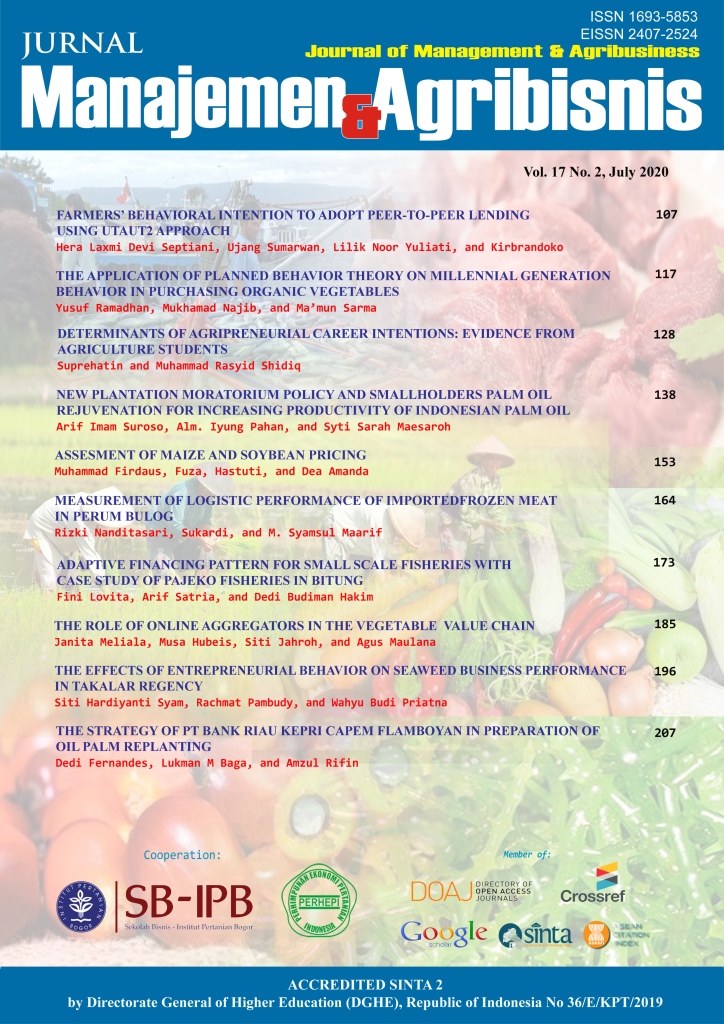The Strategy of PT Bank Riau Kepri Capem Flamboyan in Preparation of Oil Palm Replanting
Abstract
Rejuvenation of oil palm has decreasedcredit growth and savings of PT Bank Riau Kepri Capem Flamboyan which may reduce the income. The paper aims to (1) identify constraints and opportunities of farmers related to the rejuvenation of oil palm plantations, (2) analyze external and internal factors, and (3) manage a development strategy of PT Bank Riau Kepri Capem Flamboyan on the rejuvenation of oil palm plantations. Qualitative analysis was used to identify constraints and opportunities related to replanting oil palm plantations. Furthermore, identification external and internal factors was used to conduct quantitative analysis using IFE and EFE matrix. The result shows that scores of IFE and EFE are 2.652 and 3.100, respectively. A a result the position of PT Bank Riau Kepri Capem Flamboyan in the IE matrix is at the second quadrant namely growth and development strategy. The IE matrix were use to formulate SWOT analysis, and resulted 16 alternative strategies. Strategic design to implement employed strategy architecture approach. the study concluded that the routine strategy of PT Bank Riau Kepri Capem Flamboyan is socialization with KUD, mediation between KUD and the government, appoinment KUD counterparts and improvement services to customers . The strategy was divided into three phases. The first is that the bank compete to get cooperation. The second is that rejuvenation begins, and the third period indicates that the oil palm start harvesting.
Keywords: EFE, IFE, replanting, strategy architecture, SWOT
Authors
Authors who publish with this journal agree to the following terms:
- Authors retain copyright and grant the journal right of first publication with the work simultaneously licensed under a Creative Commons Attribution License that allows others to share the work with an acknowledgement of the work's authorship and initial publication in this journal.
- Authors are able to enter into separate, additional contractual arrangements for the non-exclusive distribution of the journal's published version of the work (e.g., post it to an institutional repository or publish it in a book), with an acknowledgement of its initial publication in this journal.
- Authors are permitted and encouraged to post their work online (e.g., in institutional repositories or on their website) prior to and during the submission process, as it can lead to productive exchanges, as well as earlier and greater citation of published work (See The Effect of Open Access).

